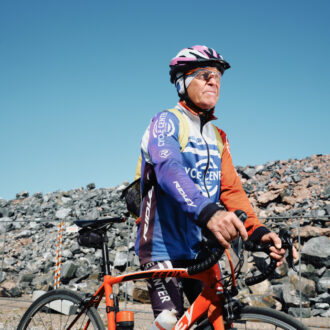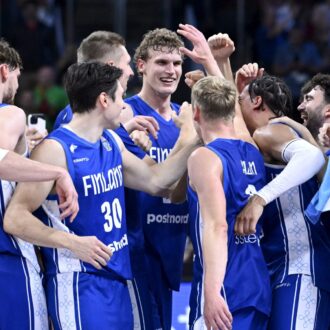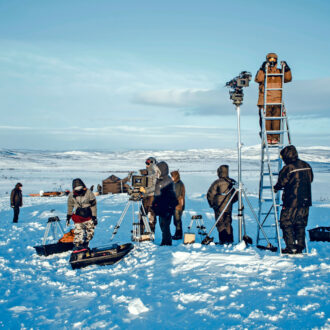Heave ho! Every August, team captains who win their events get an unceremonious dunk in the steeplechase water pit – a cherished and quirky tradition of the Finland–Sweden Athletics International.
The 2025 edition of the contest, set to take place in Stockholm from August 22 to 24, marks the centenary of this storied track and field showdown, where top athletes from the two neighbouring nations meet in a contest fuelled by pride, camaraderie and a dash of mischief.
“The Finland–Sweden International is the last surviving dual-nation international track and field meeting in the world,” says Finnish sports historian Seppo Martiskainen, who has officiated at Finland–Sweden matches. “Such internationals have almost disappeared, partly due to the commercialisation of competitive sports.”
Held alternately in Helsinki and Stockholm – and occasionally Tampere, Finland or Gothenburg, Sweden – the event draws tens of thousands of spectators. The hard-fought two-day contest includes series for men and women, with three competitors from each country vying in each event.
Getting ahead in life
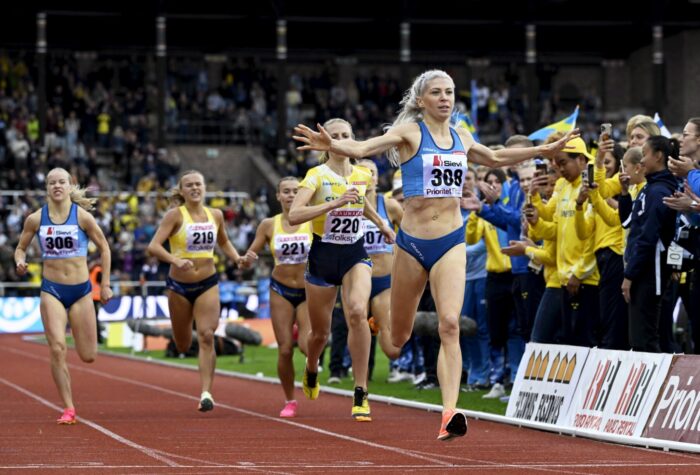
Sara Lappalainen of Finland beats her competitors during the women’s 800m run in 2023. Photo: Emmi Korhonen/Lehtikuva
“For Finns, track-and-field athletics has been the most beloved sport for more than 100 years,” says Vesa Tikander of the Tahto Centre for Finnish Sports Culture. This was an arena where Finland had the chance to get the best of Sweden, its perennial rival.
“Especially in the 1960s and ’70s” – when several hundred thousand Finns emigrated to Sweden and often had to make cultural adjustments in the process – “Finnkampen [Swedish for “Finn battle”] provided a chance to vent national frustrations,” Tikander says.
Martiskainen agrees. “The national matches in Sweden in the ’60s and ’70s were especially important for Finns who lived there,” he says. “They were opportunities to show the Swedes, who were considered arrogant, that even Finns were capable of something.”
Though Sweden’s population is nearly double that of Finland, the scoreboard has stayed surprisingly balanced. The Finnish men’s team has won 47 of 84 competitions, while the Swedish women have won 44 out of 69.
Rough-and-tumble history
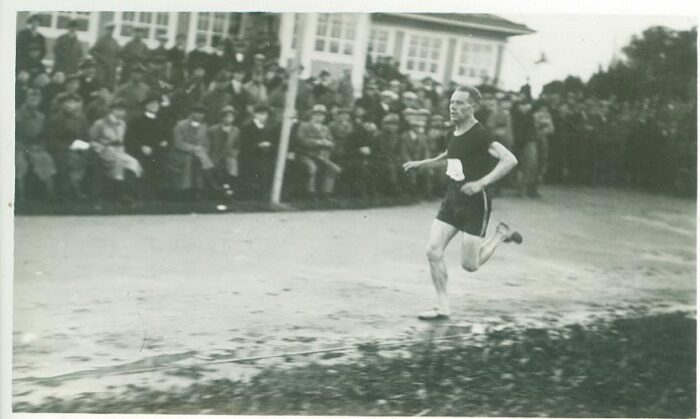
Paavo Nurmi, the original “Flying Finn”, set 22 world records in his career.Photo: Emil Wikström’s collections/Valkeakoski museum
The event has had its share of stormy moments since 1925. A fistfight broke out during the 800-metre race in 1931, prompting a Finnish boycott led by Finnish Athletics Federation chief – and future Finnish president – Urho Kekkonen.
The pause lasted until 1939; its length may have also been related to a political spat at the 1932 Olympics over the amateur status of Finnish running legend Paavo Nurmi, who won nine Olympic gold medals in the 1920s.
The Finland–Sweden competition was cancelled again from 1941 to 1945 because of the war.
Finland had agreed to restart the games in 1939, just before the ill-fated 1940 Summer Olympics, which were to be held in Helsinki. Though the Olympics were cancelled that year (Helsinki eventually hosted them in 1952), that summer saw a three-way competition between Finland, Sweden and Germany – a regrettable choice in hindsight.
Rivalry fuels the fire
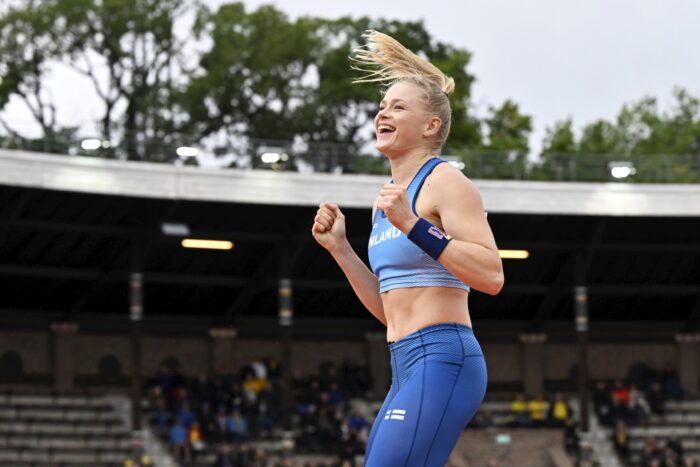
Wilma Murto of Finland is all smiles after a pole vault in the 2023 competition in Stockholm.Photo: Emmi Korhonen/Lehtikuva
Finnish running legend Lasse Virén, who followed in Nurmi’s footsteps by winning four Olympic golds, competed in many Finland–Sweden contests in the 1970s, along with other Olympic medallists such hurdler Arto Bryggare.
In 1995, Sari Essayah set the event record for the 5000-metre race walk. Now Finland’s Minister of Agriculture and Forestry, she still remembers it fondly.
“This competition is very special for an athlete,” Essayah says. “It’s a match with our dearest enemy, where everyone’s performance is important for the team’s success. For many young athletes, it’s the first step towards the international level. The audience and atmosphere are unique, and I was lucky to be part of that tradition.”
In recent decades, the Finnish team has included javelin world champion Tero Pitkämäki, European hammer throw champion Olli-Pekka Karjalainen and European junior champions Nooralotta Neziri (hurdles) and Mikaela Ingberg (javelin).
Grit and glory
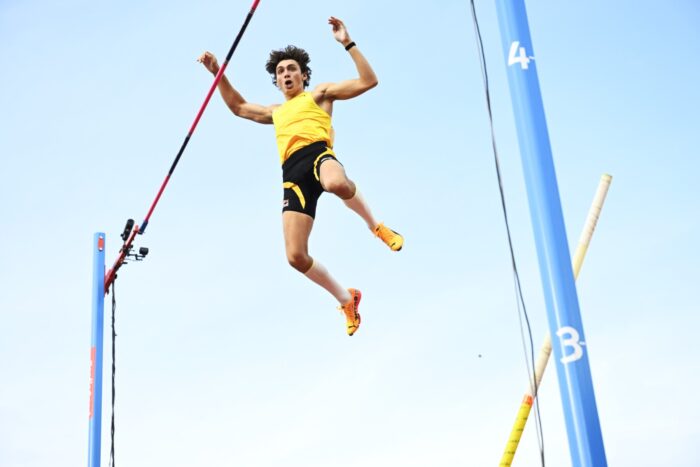
Sweden’s Armand Duplantis holds the world record in the men’s pole vault competition. He first competed in the Finland-Sweden competition as a teenager.Photo: Fredrik Sandberg/TT
The brightest star of the centennial year’s competition is Swedish American Armand Duplantis, widely considered the greatest pole vaulter of all time. The seven-time world champion first competed in the event a decade earlier, becoming the Swedish team’s youngest-ever competitor at age 15.
Finland’s greatest hope in the pole vault is two-time European women’s champion Wilma Murto.
“This is a special event for athletes who compete in individual events,” says Murto. “It’s the one opportunity to truly compete as a team – and the classic Finland vs. Sweden rivalry really fuels the fire in us.”
In recent years, Sweden’s men have dominated, winning five years in a row from 2019 to 2023, with the outdoor event continuing even through the pandemic. Finland finally broke their streak in 2024. The Finnish women’s team hasn’t won since 2015, but maybe the centenary year will be their moment.
“For Finland, the event to watch [in 2025] is the women’s hammer throw,” says Tikander, “thanks to our big names, world under-20 champion Silja Kosonen and Krista Tervo, who set her personal best at the 2024 Olympics.”
There will be grit, glory and, as always, a few soaked team captains. See you in Stockholm.
By Wif Stenger, August 2025
